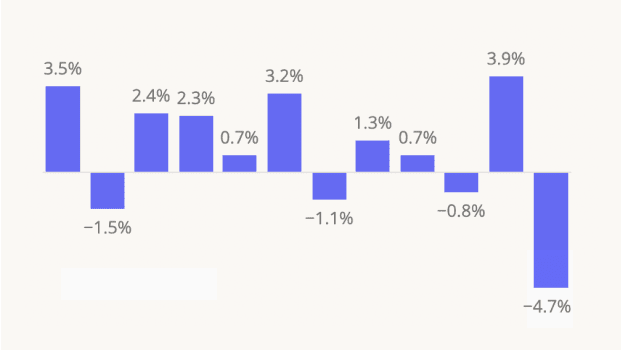Retail Media on the Rise
Retail media networks – advertising platforms enabling third parties to promote products and services on a retailer’s websites, digital apps, brick-and-mortar stores, or across partners’ digital properties – have firmly entered the mainstream. Major chains across industries now allow sellers direct access to consumers at the critical point of purchase. And since most shopping still takes place offline, retailers are increasingly expanding their in-store retail media offerings – through digital signage, in-store audio, sampling stations, and in-app features that appear when a customer is physically in the store.
But what do location analytics tell us about the relationship between online and offline retail in 2025 – and the potential role of brick-and-mortar retail media in driving consumer engagement? We dove into the data to find out.
Bricks > Clicks
A closer look at several chains that are heavily investing in brick-and-mortar retail media reveals how the in-store / online mix varies by both retailer and season. Unsurprisingly, Kroger’s unique physical visitors outpaced unique website visitors (desktop and mobile) during every quarter. In contrast, The Home Depot’s in-store visitors were closer to its online traffic – occasionally dropping below it in Q1 2025. Target, Lowe’s, and Walmart fell somewhere in between these two extremes.
Interestingly, all chains analyzed attracted more physical visitors in the spring and summer (Q2 and Q3) than in the fall and winter. For both retail media networks and their advertising partners, understanding the interplay between online and offline traffic is crucial for optimizing advertising strategies.
Walmart Connects the Aisle to the Web
Walmart has emerged as a leader in brick-and-mortar retail media. Through Walmart Connect, the company provides partners with a variety of in-store advertising solutions, including digital screens, in-store radio, on-site demos, and sponsored events at Walmart locations. And non-endemic brands – ranging from restaurants to financial services – can also tap into both Walmart’s online and offline retail media networks.
And foot traffic data shows that the ratio of online to offline Walmart visitors differs greatly throughout the country. In the South Central region, including Texas, Walmart’s physical stores saw 85.0% more unique visitors in May 2025 than its website. But in the Northeast, the gap narrowed to just 8.4%. So advertisers may find cost-effective opportunities by tailoring campaigns to regional traffic tendencies.
States of Opportunity
The relative size of Walmart’s state-wide markets also varies by channel. In May 2025, Texas accounted for 10.2% of Walmart’s unique in-store visitors, making it the top regional brick-and-mortar market. Yet online, California took the lead at 12.1% of total website visitors. So advertisers aiming for the biggest in-store crowd might choose Texas, while those focused on digital reach could invest more in California. Florida, meanwhile, remained the third-largest market for both online and offline traffic, grabbing about 7.0% of each.
Omnichannel Rules
Though offline shopping continues to dominate, the numbers show that neither channel exists in a vacuum. And given how shopper preferences differ by region and season, brands that harness both online and offline data can craft more relevant, impactful campaigns.
For more data-driven retail and advertising analysis follow Placer.ai/anchor.




.svg)





.png)
.png)

.png)
.png)









